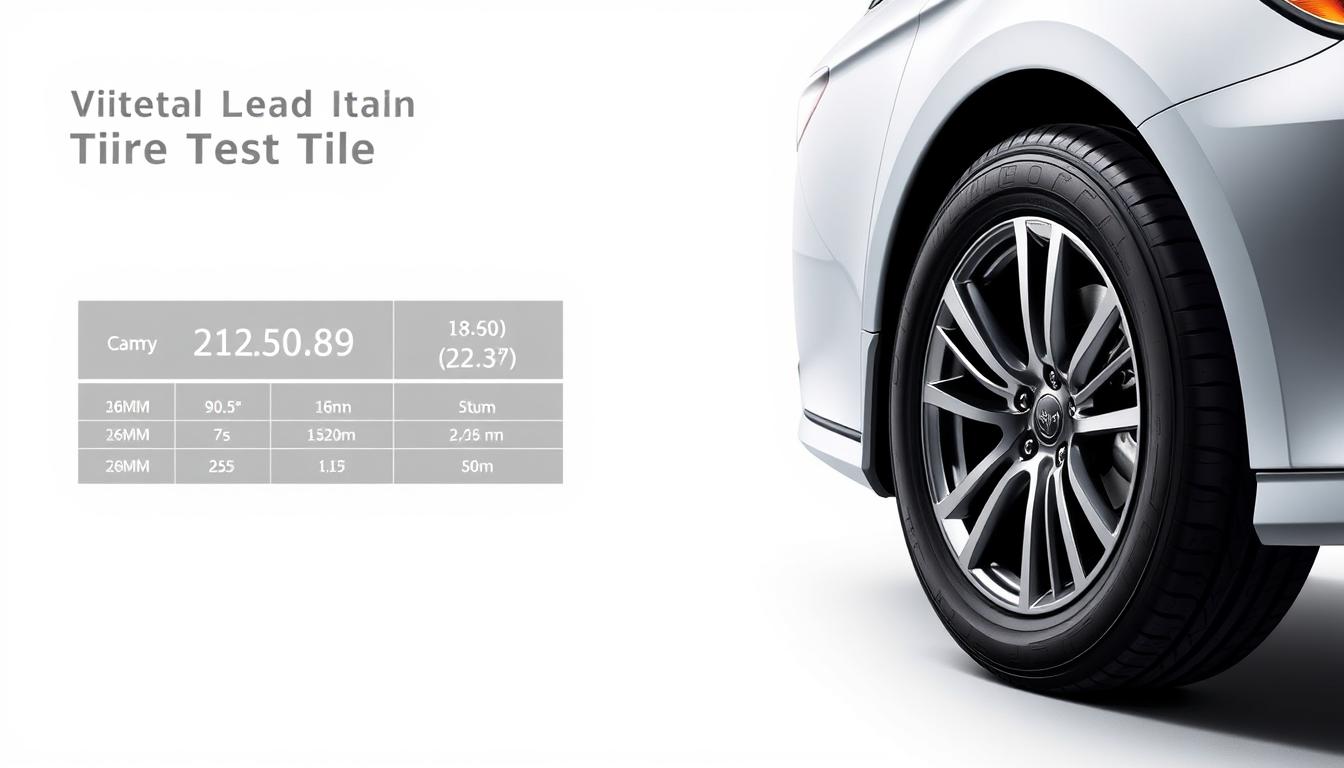The Toyota Camry is known for being reliable and fuel-efficient. But, to keep it running at its best, picking the correct tire size is key.
Finding the right Toyota Camry tire size makes driving smooth and safe. With so many choices, it’s hard to know which one is best for your car.
Knowing how important the Camry tire size is helps improve your car’s performance and safety. This guide will help you find the perfect tire size for your Toyota Camry.
Understanding Tire Size Basics for Your Toyota Camry
Tire size is key for your Toyota Camry’s performance. The right size improves handling, fuel use, and safety. We’ll cover the basics of tire size and its impact on your Camry.
Decoding Tire Size Markings
Tire size markings on your Toyota Camry are important. They show the tire’s width, aspect ratio, diameter, load index, and speed rating. Knowing these details helps choose the right tire size.
Width, Aspect Ratio, and Diameter Explained
The tire size marking looks like 225/55R18. Here, 225 is the width in millimeters, 55 is the aspect ratio, and 18 is the wheel diameter in inches. These numbers are key for matching the tire to your Camry.
Load Index and Speed Rating Significance
The load index and speed rating are also vital. The load index shows the tire’s weight limit, and the speed rating is the top speed it can handle. For your Camry, following the manufacturer’s load index and speed rating is important for safety and performance.
Knowing these basics helps you choose the right tires for your Camry. Whether you need a Camry OEM tire size or something else, this guide is your best Camry tire size resource.
The Complete Camry Tire Size Guide by Generation
The Toyota Camry is a well-known car that has changed a lot over the years. Its tire sizes have also changed. Knowing the right tire size for your Camry is key for its performance and safety.
Here’s a breakdown of the tire size specifications for different generations of the Toyota Camry:
Latest Generation (2018-2023) Tire Specifications
The 2018 to 2023 Toyota Camry has different tire sizes based on the trim and setup. Common sizes include:
- 18-inch tires for the base models
- 19-inch tires for higher trims like the XSE and XLE
These sizes are chosen to improve handling, fuel efficiency, and performance. For example, the XSE trim often has 19-inch tires. These tires make the car feel sportier and handle better.
Middle Generation (2007-2017) Tire Specifications
The Camry from 2007 to 2017 had tire sizes between 16 and 17 inches. Some key sizes are:
- 16-inch tires for the base models
- 17-inch tires for higher trims
The tire sizes for this generation aimed for a balance between comfort and handling. The Camry XLE models, for example, had 17-inch tires. These tires gave a smoother ride and better grip.
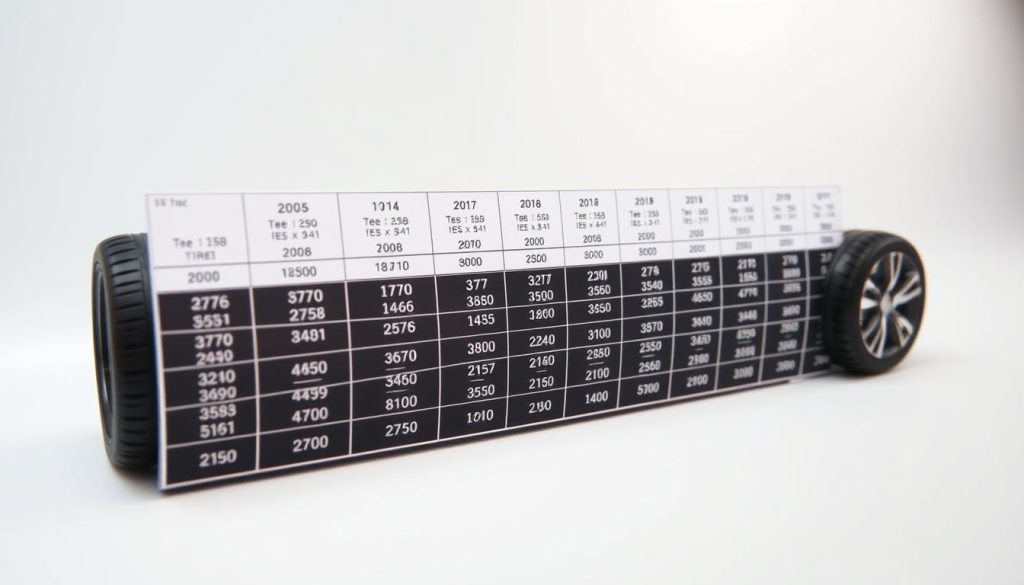
Classic Camry (1990-2006) Tire Specifications
The classic Toyota Camry, from 1990 to 2006, had tire sizes from 14 to 16 inches. Some common sizes are:
- 14-inch tires for older models
- 15 or 16-inch tires for later models within this generation
These sizes were chosen for a comfortable ride and good handling for the time. The Camry LE models often had 15-inch tires. These tires balanced comfort and fuel efficiency well.
Knowing the tire size for your Toyota Camry’s generation helps ensure it has the right tires. This improves its performance, safety, and driving experience.
How to Find Your Exact Camry Tire Size
Finding your Camry’s tire size is easy if you know where to look. You can find this info in several places. This makes it simple to find the right size for your car.
Locating Tire Information on Your Vehicle
Start by checking your car. The tire size is printed on the tire sidewall. It’s important to understand these markings.
Sidewall Markings Interpretation
The sidewall has numbers and letters that tell you about your tire. For example, “225/45R18 91V” means the tire is 225 wide, 45 aspect ratio, R construction, 18 rim diameter, 91 load index, and V speed rating. Understanding these markings helps you find your Camry’s OEM tire size.
VIN Lookup Methods
You can also use the Vehicle Identification Number (VIN) to find your tire size. The VIN is a 17-character code on the dashboard or inside the driver’s side door. Use it in a VIN decoder or ask a dealership.
Using Your Owner’s Manual and Door Jamb Sticker
The owner’s manual and the tire information placard on the driver’s side doorjamb are also good sources. The manual has a section on tire info. The doorjamb sticker shows the recommended tire size and pressure.
By checking these sources, you can find your Camry’s tire size. This is true whether you want the OEM size or an aftermarket tire size. Having the right info helps keep your car running well and safely.
Comprehensive Camry Tire Size Chart by Year and Model
Toyota Camry tire sizes change a lot over the years and models. This guide helps you find the right tire size for your car.
2010-2023 Camry Tire Sizes
From 2010 to 2023, Camry tire sizes vary. They depend on the trim level and model type.
Standard LE/SE Models
The LE and SE models usually have tires from 215/60R16 to 235/45R18. This depends on the wheel size and year.
- 2010-2011: 215/60R16
- 2012-2017: 215/60R16 or 235/45R18
- 2018-2023: 235/45R18
XLE/XSE and TRD Variants
XLE, XSE, and TRD models have different tire sizes. They range from 235/40R19 to 245/40R19.
- XLE (2012-2017): 235/45R18
- XSE (2018-2023): 245/40R19
- TRD (2015-2017): 235/40R19
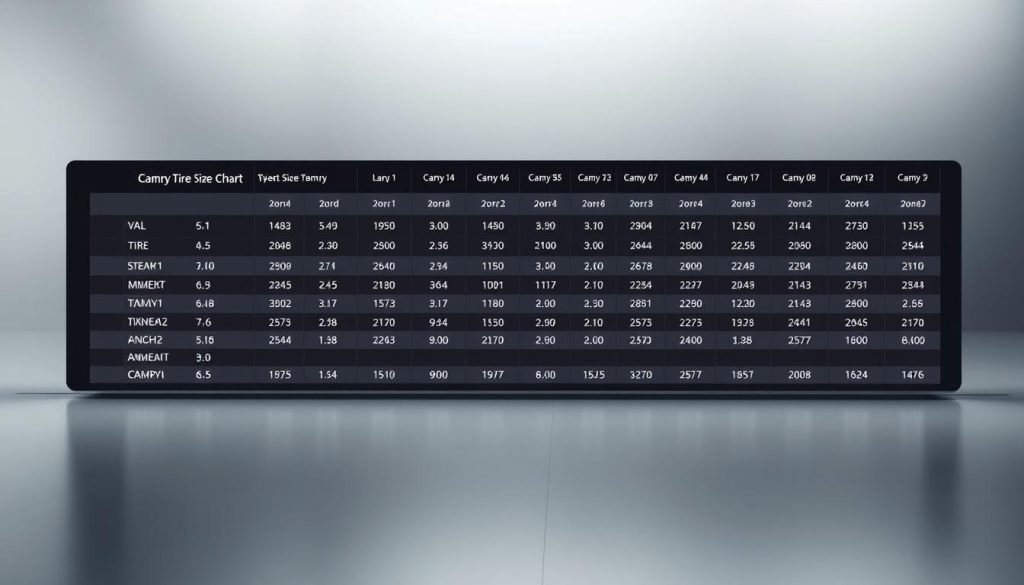
1990-2009 Camry Tire Sizes
Older Camry models (1990-2009) had different tire sizes. These sizes depended on the engine and model details.
Four-Cylinder Models
Four-cylinder models usually had tires like 195/70R14 or 205/60R15.
- 1990-1991: 195/70R14
- 1992-1996: 195/70R14 or 205/60R15
- 1997-2001: 205/60R15
V6 Models
V6 models had bigger tires, like 205/60R15 or 215/60R16.
- 1992-1996: 205/60R15
- 1997-2001: 205/60R15 or 215/60R16
- 2002-2006: 215/60R16
Using this Camry tire size chart, you can find the perfect tire for your Toyota Camry. This ensures your car runs well and safely.
The Impact of Correct Camry Tire Size on Performance
Having the right tire size for your Toyota Camry is key for top performance and safety. The right size affects how your car handles, stays stable, and uses fuel.
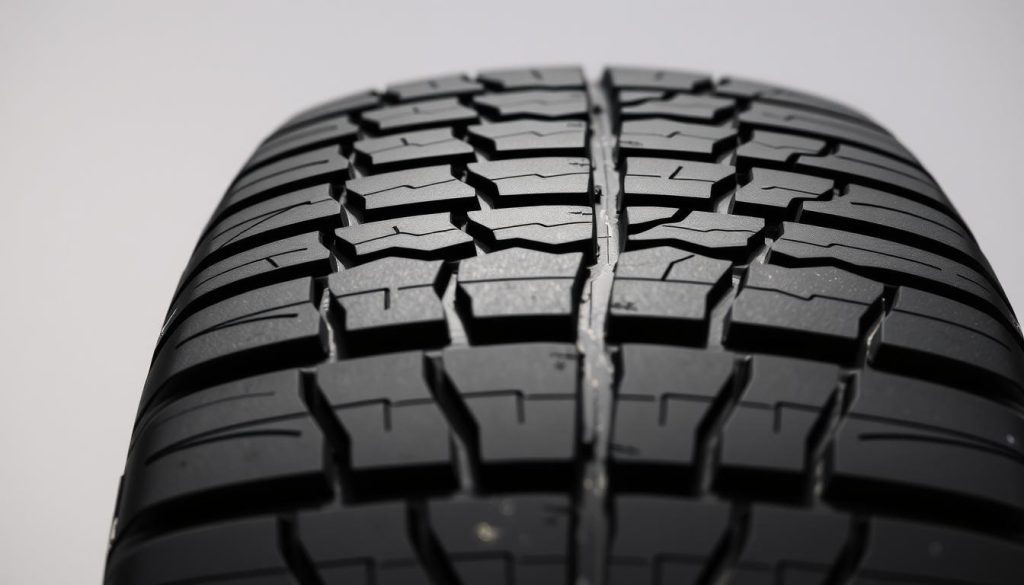
Handling and Stability Considerations
The correct Camry tire size is vital for your car’s handling and stability. The right size ensures your Camry turns well and stays steady. This is important when cornering or driving on wet roads.
Wrong tire sizes can make your car harder to control. For example, big tires might give better grip but make steering feel heavy.
Fuel Efficiency and Tire Size Relationship
The link between tire size and fuel use is complex. The Camry recommended tire size aims to balance fuel use and performance. Bigger tires might use more fuel because they roll harder, while smaller ones might save gas but affect handling.
How Oversized Tires Affect MPG
Bigger tires can hurt your Camry’s fuel efficiency. They need more energy to move, which lowers MPG. But, how much it affects depends on the tire model and how you drive.
Optimal Sizes for Efficiency
To get the best fuel use, use the Camry recommended tire size. This size is made to keep performance high while saving fuel. If you’re thinking of changing sizes, talk to a tire expert to see how it might affect your car’s performance and fuel use.
OEM vs. Aftermarket Tire Sizes for Toyota Camry
Choosing between OEM and aftermarket tire sizes for your Toyota Camry affects your car’s performance and fuel use. OEM sizes are best for the car’s performance. But, aftermarket sizes might be better for certain needs.
Benefits of Sticking with OEM Specifications
Using the OEM tire size keeps your Toyota Camry running as Toyota designed it. The OEM tire size balances handling, fuel use, and comfort.
- Ensures proper speedometer calibration
- Maintains the vehicle’s intended handling characteristics
- Preserves the manufacturer’s warranty
- Optimizes fuel efficiency as intended by the manufacturer
Choosing the Camry OEM tire size means your car will stay true to Toyota’s standards.
When Aftermarket Sizes Make Sense
While OEM sizes are best, aftermarket tire sizes can be good in certain cases. They offer benefits in specific situations.
Performance Upgrades
Aftermarket tires can improve your car’s grip and handling. This is great for drivers who value these features.
Aesthetic Modifications
Some owners want bigger or wider tires for looks. But, make sure any changes follow local laws and don’t harm your car’s safety or performance.

In summary, OEM sizes are usually the best choice. But, aftermarket tires can be good for certain reasons. Always think about the pros and cons before deciding.
Upgrading Your Camry Tire Size: Possibilities and Limitations
Thinking about upgrading your Toyota Camry’s tire size? It’s key to know the possibilities and limits. Changing your tire size can change how your car handles and affects safety.
Calculating Safe Tire Size Upgrades
To safely upgrade your Camry’s tire size, consider a few important factors. First, learn about the Plus-Sizing Method. This method means increasing the rim size and lowering the tire’s aspect ratio to keep the diameter the same.
The Plus-Sizing Method Explained
The Plus-Sizing Method lets you increase your tire size without messing up your car’s speedometer or performance. For instance, you can go from a 17-inch rim with a 45% aspect ratio to an 18-inch rim with a 40% aspect ratio. This keeps the tire diameter close to the original.
Maximum Size Recommendations
When picking the biggest tire size for your Camry, check your owner’s manual or the tire placard on the driver’s side door jamb. These tell you the best tire size and load rating for your car. Going over these can cause clearance issues and might risk your safety.
| Original Size | Plus-Sizing Option 1 | Plus-Sizing Option 2 |
|---|---|---|
| 215/60R17 | 225/50R18 | 235/45R19 |
| Rim: 17 inches, Aspect Ratio: 60% | Rim: 18 inches, Aspect Ratio: 50% | Rim: 19 inches, Aspect Ratio: 45% |
Potential Issues with Non-Standard Sizes
Using non-standard tire sizes can cause problems like speedometer inaccuracies and clearance problems. Bigger tires might hit the fender wells or suspension parts, causing damage or affecting how the car handles. Also, non-standard sizes might void your warranty and not work with your Camry’s safety features.
Before upgrading your tire size, talk to a tire expert. They can check if the size you want fits your car and meets your performance needs. They’ll help you through the complex world of tire sizing to ensure a safe and effective upgrade.
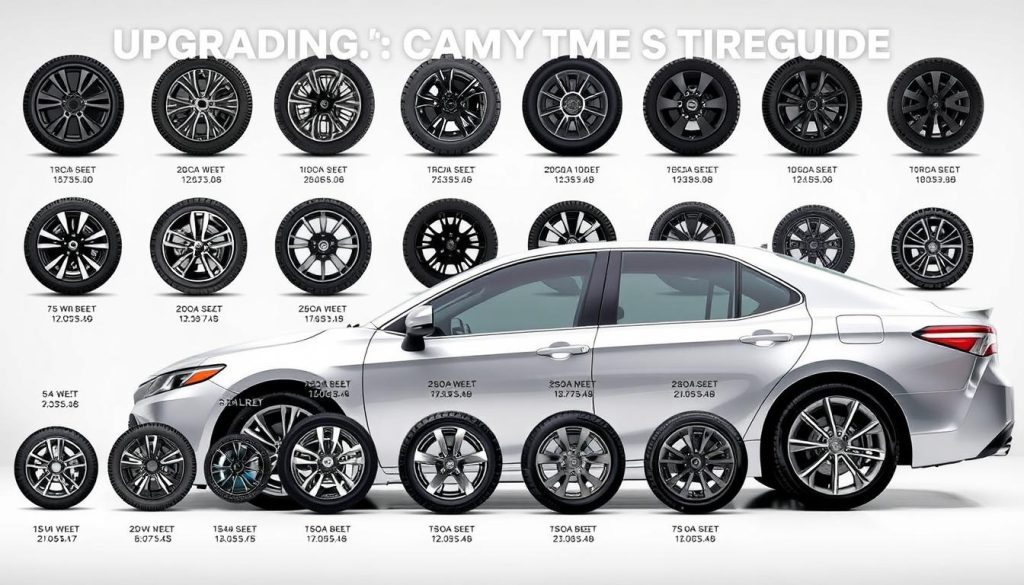
Seasonal Camry Tire Size Considerations
Knowing the right tire size for your Camry by season is key for the best performance. Each season poses unique challenges, and the right tire size can greatly affect how your car handles, stays safe, and saves fuel.
Winter Tire Size Options
In winter, your Camry needs tires that grip snowy and icy roads well. Narrower tires are often the best choice for this reason.
Narrower Winter Tires Benefits
Narrower winter tires help your Camry grip snowy roads better. They do this by applying more pressure on the tire’s contact patch. This is great for drivers who often drive on snowy roads.
Snow Chain Compatibility
When picking winter tires, think about snow chain compatibility. Some tire sizes won’t work with snow chains. Always check your Camry’s tire size chart to make sure it’s compatible if you need snow chains.
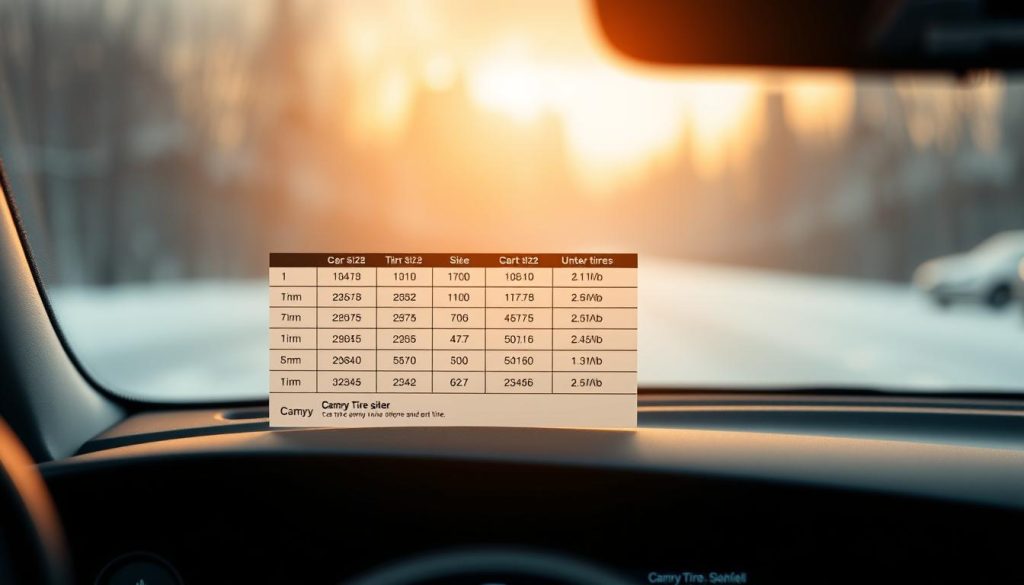
All-Season vs. Summer Tire Dimensions
All-season tires are a good choice if you don’t need winter tires. They balance handling, fuel efficiency, and traction in different weather. Summer tires, made for warmer weather, offer better dry road handling and braking.
Summer tires usually have a wider profile for better dry handling. When deciding between all-season and summer tires, think about your usual driving conditions. Also, check the Camry recommended tire size for your model year.
How Camry Tire Size Affects Ride Quality and Comfort
The ride quality and comfort of your Toyota Camry depend a lot on its tire size. Picking the correct Camry tire size is key for a smooth ride. The tire size impacts the car’s handling and how it deals with road bumps.
Profile Height and Ride Comfort
The profile height of a tire is very important for ride comfort. A taller tire can make the ride smoother by soaking up road bumps. But, it might change how the car handles, like when turning.
Impact Absorption Properties are linked to the tire’s profile height. Taller tires can handle more shock, making the ride smoother. This is great for Camry owners who value comfort.
Impact Absorption Properties
Tires with higher profiles are better at absorbing shock. This makes them good for drivers who often hit rough roads. The right Camry tire size ensures the tire works well with the car’s weight and suspension.
Width Considerations for Road Feel
The width of a tire also affects the ride quality. Wider tires offer better grip and handling but can let more road noise in. Camry owners need to find the right balance between width and comfort.
Noise Level Differences
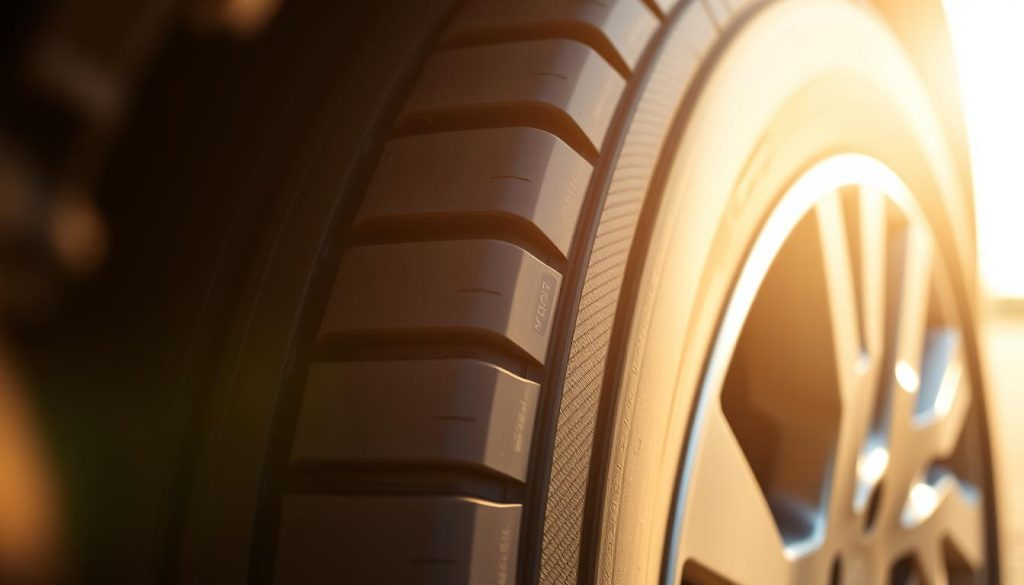 correct Camry tire size helps reduce noise while keeping the road feel good.
correct Camry tire size helps reduce noise while keeping the road feel good.
Cost Implications of Different Camry Tire Sizes
The cost of owning a Camry can change based on the tire size you pick. It’s not just the first price you pay. There are costs to think about over time, too.
Price Variations Between Standard and Optional Sizes
Tire prices for your Camry can differ a lot. Standard sizes are cheaper and easy to find. But optional sizes might give better performance but cost more. For example, a 2025 Camry tire size guide shows the different sizes and their prices.
Optional sizes, like bigger ones or those for higher speeds, cost more. You should think about if the extra cost is worth it.
Long-term Cost Considerations
Tire size also affects costs over time. This includes wear and tear, fuel use, and how much your car is worth later.
Wear Patterns and Replacement Frequency
The size of your tires can change how often you need new ones. The right size means your tires wear evenly, lasting longer. The wrong size means they wear unevenly, needing to be replaced more often.
Resale Value Impact
The resale value of your Camry can also be affected by tire size. Using the size recommended by the maker helps keep your car’s value. Changing sizes might be seen as a modification.
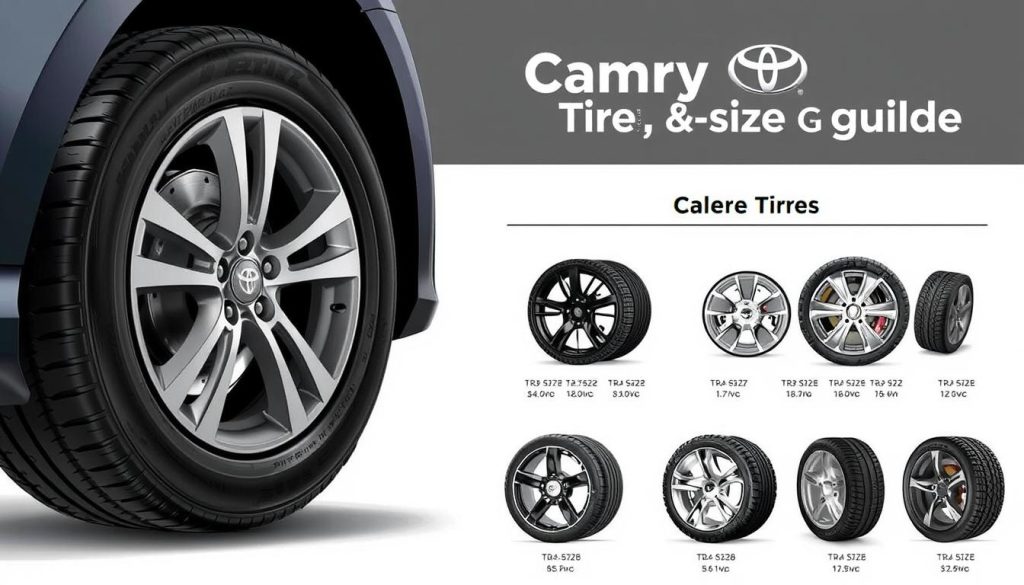
Knowing these points helps you choose the right Camry tire size. It’s about finding a balance between the first cost and long-term savings.
Common Mistakes When Selecting Camry Tire Sizes
Choosing the right Camry tire size is key for the best performance and safety. Many Camry owners make big mistakes when picking tire sizes. These errors can lower vehicle performance, safety, and even cause damage.
Overlooking Load Rating Requirements
The load rating of a tire is vital. It makes sure the tire can carry your vehicle’s weight, passengers, and cargo. Ignoring this can lead to tire failure, which is dangerous, when you’re carrying heavy loads or towing.
Hybrid Model Considerations
Camry Hybrid models need special attention. The battery pack adds extra weight. Make sure the tires you choose can handle this extra load.
Family Loading Factors
Families with lots of passengers or heavy cargo need tires with a higher load rating. This ensures the tires can handle the extra weight safely and without losing performance.
| Load Rating | Maximum Load | Typical Use |
|---|---|---|
| 91H | 1,356 lbs | Standard Camry models |
| 94H | 1,477 lbs | Camry models with heavy loads or towing |
Ignoring Speedometer Calibration Issues
Changing tire sizes without calibrating the speedometer can cause wrong speed readings. This can lead to safety issues or traffic problems. It’s important to calibrate the speedometer when changing tire sizes.
Always consult your owner’s manual or a professional mechanic to ensure your tire size change is properly calibrated.
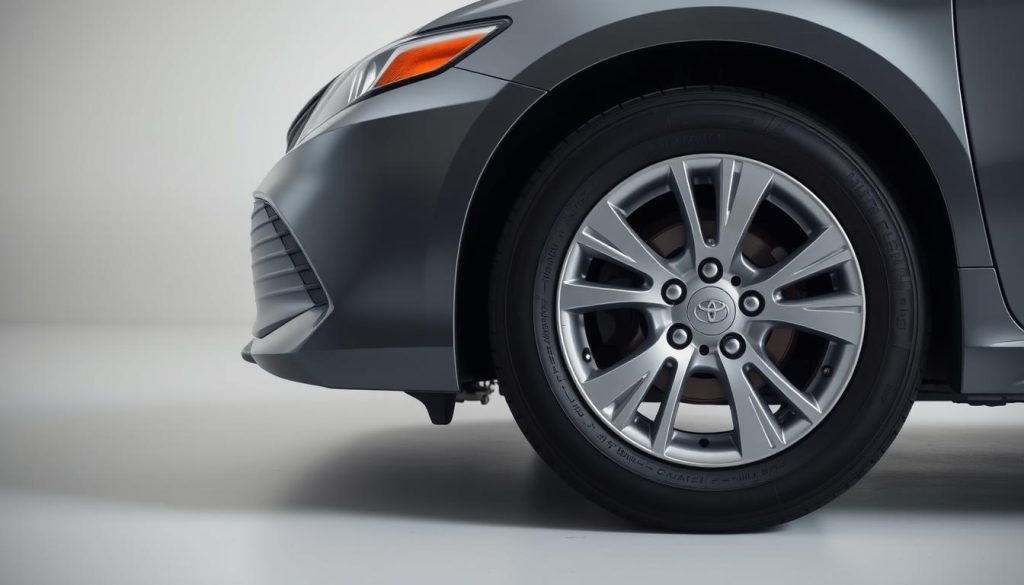
By avoiding these common mistakes, Camry owners can make sure their vehicle has the correct Camry tire size. This ensures optimal performance, safety, and fuel efficiency.
Where to Buy the Right Tires for Your Toyota Camry
Now that you know your Camry’s tire size, it’s time to look for the right tires. You have many places to choose from, each with its own benefits.
Dealership vs. Tire Specialists vs. Online Retailers
There are three main places to buy tires for your Toyota Camry: dealerships, tire specialists, and online retailers. Dealerships are convenient because you can buy and install tires in one place. They know your car well. Tire specialists have more options and can give you advice on what’s best for you.

Online retailers let you shop from home and might have lower prices. But, make sure the tires fit your Camry’s size and needs.
What to Ask When Purchasing New Tires
When buying tires, ask important questions no matter where you go. This ensures you get the right tires for your Toyota Camry.
Warranty Considerations
Ask about the tire warranty and what it covers. A good warranty gives you peace of mind and protects your investment.
Installation Services Comparison
If you’re not buying from a dealership, ask about installation services. Some places offer free installation, while others charge. Remember to include this in your total cost.
By thinking carefully and asking the right questions, you can find the perfect tires for your Toyota Camry. This will make your driving smooth and safe.
Conclusion: Ensuring the Perfect Fit for Your Camry
Finding the right tire size is key for your Camry’s best performance and safety. Knowing how to read tire size markings and using the Camry tire size chart helps you choose wisely.
The ideal tire size for your Camry depends on several things. This includes your Camry’s generation, how you drive, and what you prefer. Whether you stick with the original size or choose something different, think about how it might affect your car’s handling, fuel use, and comfort.
Looking at the detailed Camry tire size guide and chart can help you find the perfect size for your Camry. Don’t forget to consider load rating and speedometer calibration for a safe and comfortable drive.
Choosing the right tire size can make your driving better, more fuel-efficient, and more comfortable. Do your research and talk to tire experts to find the best fit for your Camry.
FAQ
What is the correct tire size for my Toyota Camry?
The right tire size for your Toyota Camry varies by model year and trim. Check your owner’s manual or the tire information placard on the driver’s side door jamb. You can also look at the tire sidewall.
How do I decode the tire size markings on my Camry’s tires?
Tire size markings include numbers and letters. They tell you the tire’s width, aspect ratio, diameter, load index, and speed rating. For example, “225/60R18 100H” means a 225mm width, 60% aspect ratio, 18 inches diameter, load index of 100, and speed rating of H.
What is the difference between OEM and aftermarket tire sizes for my Camry?
OEM (Original Equipment Manufacturer) tire sizes are what Toyota recommends for your Camry. Aftermarket sizes come from other manufacturers. Sticking with OEM sizes ensures the best performance and safety. But, aftermarket sizes might be good for upgrading to larger wheels.
Can I upgrade my Camry’s tire size, and what are the limitations?
Yes, you can upgrade your Camry’s tire size. But, it’s important to choose safe upgrades. Upgrades that are too big can rub against the fender or affect the speedometer. Always talk to a tire professional to find the best upgrade for your vehicle.
How does the correct Camry tire size affect fuel efficiency?
The right tire size for your Camry can affect fuel efficiency. Larger or smaller tires can change how the car rolls and how it cuts through the air. Sticking with the OEM size usually means better fuel efficiency. But, some aftermarket sizes might also improve fuel efficiency.
What are the seasonal considerations for Camry tire size?
When choosing tire size for your Camry, think about the season. Winter tires are narrower and have a deeper tread for snow. Summer tires are for dry roads. All-season tires are a middle ground.
How does Camry tire size influence ride quality and comfort?
Tire size affects how your Camry rides and feels. Taller tires are more comfortable, but wider tires might make the car handle better. It’s a trade-off between comfort and handling.
What are the cost implications of different Camry tire sizes?
Different tire sizes for your Camry cost differently. Larger or specialty tires are often pricier. Think about the long-term costs, like fuel efficiency, tire life, and repair or replacement costs.
Where can I buy the right tires for my Toyota Camry?
You can buy tires for your Toyota Camry at Toyota dealerships, tire specialists, or online. Make sure to ask about the correct size, load rating, and speed rating for your vehicle.
What are the common mistakes to avoid when selecting Camry tire sizes?
Avoid ignoring load rating, speedometer issues, and how the tires affect handling and fuel efficiency. Always get advice from a tire professional if you’re unsure.
How do I find the tire size chart for my Toyota Camry?
Look for a tire size chart for your Toyota Camry in the owner’s manual or online. You can also ask a Toyota dealership or tire specialist. They can give you detailed information on tire sizes for different Camry models and years.
